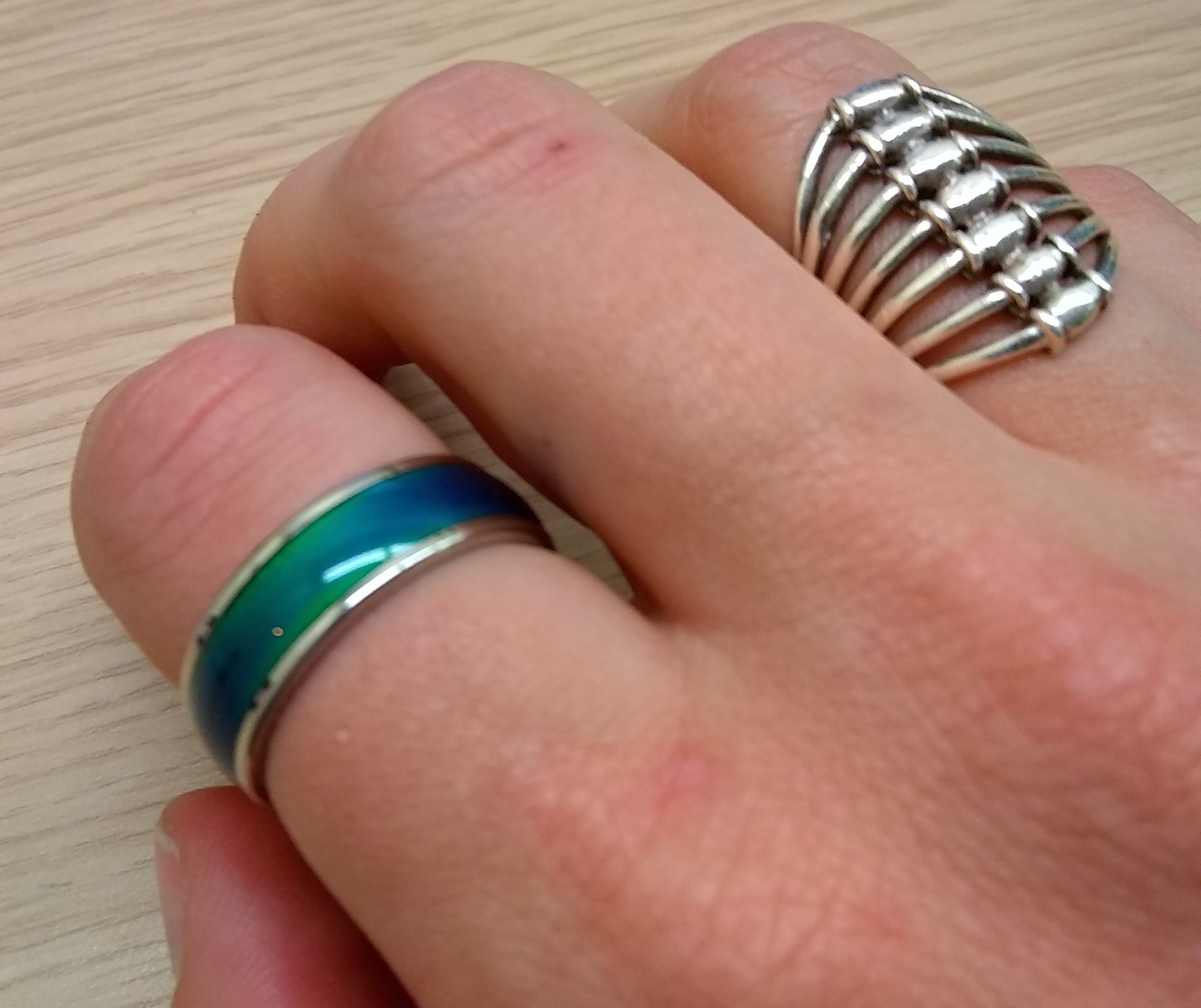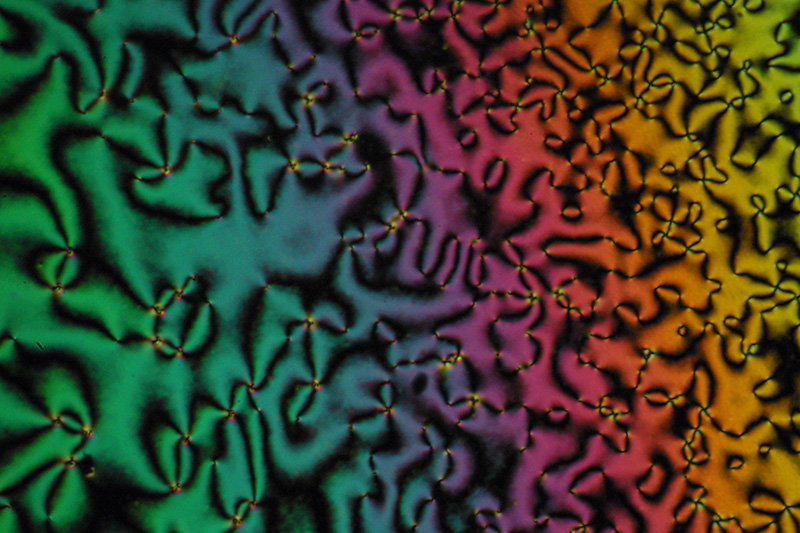A few months ago I lost my mood ring. Which is very discerning; I haven’t been able to tell what my mood is since then!
I was reminded of my lack of mood-reading device in Vancouver last weekend. I was in one of those fantasy-merch shops that sells lots of dragon statues. I was admiring their collection of mood rings and wondering whether I should buy a new, when I suddenly realized I didn’t actually know how mood rings work.

To the google!
Thermochromic materials
Mood rings don’t actually tell what your mood is (sorry). They do give some indication of your skin temperature, which I guess is slightly related to your mood but probably more related to the weather and how cold you’re feeling. Created in 1975 by New Yorkers Josh Reynolds and Maris Ambats, mood rings were a fad in the 1970s, and probably again in the 1990s if I remember correctly. To be honest, they’ve never really left the mystic thingumabob shops, or souvenir shops (as you might be able to tell by the Celtic knot design in the picture above; I bought the rings for my friend and me in a Scottish souvenir shop).
The change-changing part of a mood ring is a thermochromic material, i.e. a material that changes color (chroma -χρῶμα) due to a change in temperature (thermos – θερμός).*
There are different examples of thermochromic materials and a number of different applications. Those t-shirts that change in color if you press your hand on them. Those cups that change color when containing a hot liquid. Those little thermometer rulers that change color if you hold them in your hand. And mood rings.
Liquid crystals
The type of material in a mood ring, that changes color according to changing temperature, is a liquid crystal.
If you had some intro to chemistry at some point, you might remember hearing that crystals have a very organized structure, with atoms (or molecules) forming a lattice. Perhaps you did an experiment where you made salt crystals by evaporating water from saltwater in a dish. But you probably remember that crystals were not liquid.
Then what are liquid crystals? Basically, it’s a state of matter which lies in between liquids and crystals. Usually, liquid crystal molecules are elongated, so depending on their packing they have more crystal-like properties (dense packing) or more liquid properties (looser packing). Depending on their “phase”, i.e. structural organization and packing, the optical properties of liquid crystals change.
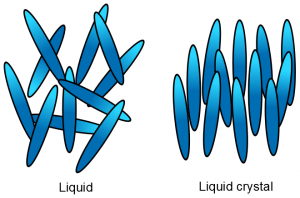
The molecules in a liquid crystal can take up different degrees of order:
- No order; basically the material is a liquid with properties of a fluid. (A in the very professional sketch below.)
- Some order; the molecules sort of align in the same direction, but not along a plane (B).
- More order; the molecules start organizing themselves along planes (C).
- Full order; all molecules are neatly arranged in a regular lattice structure. Wait, this is a full crystal! (D)
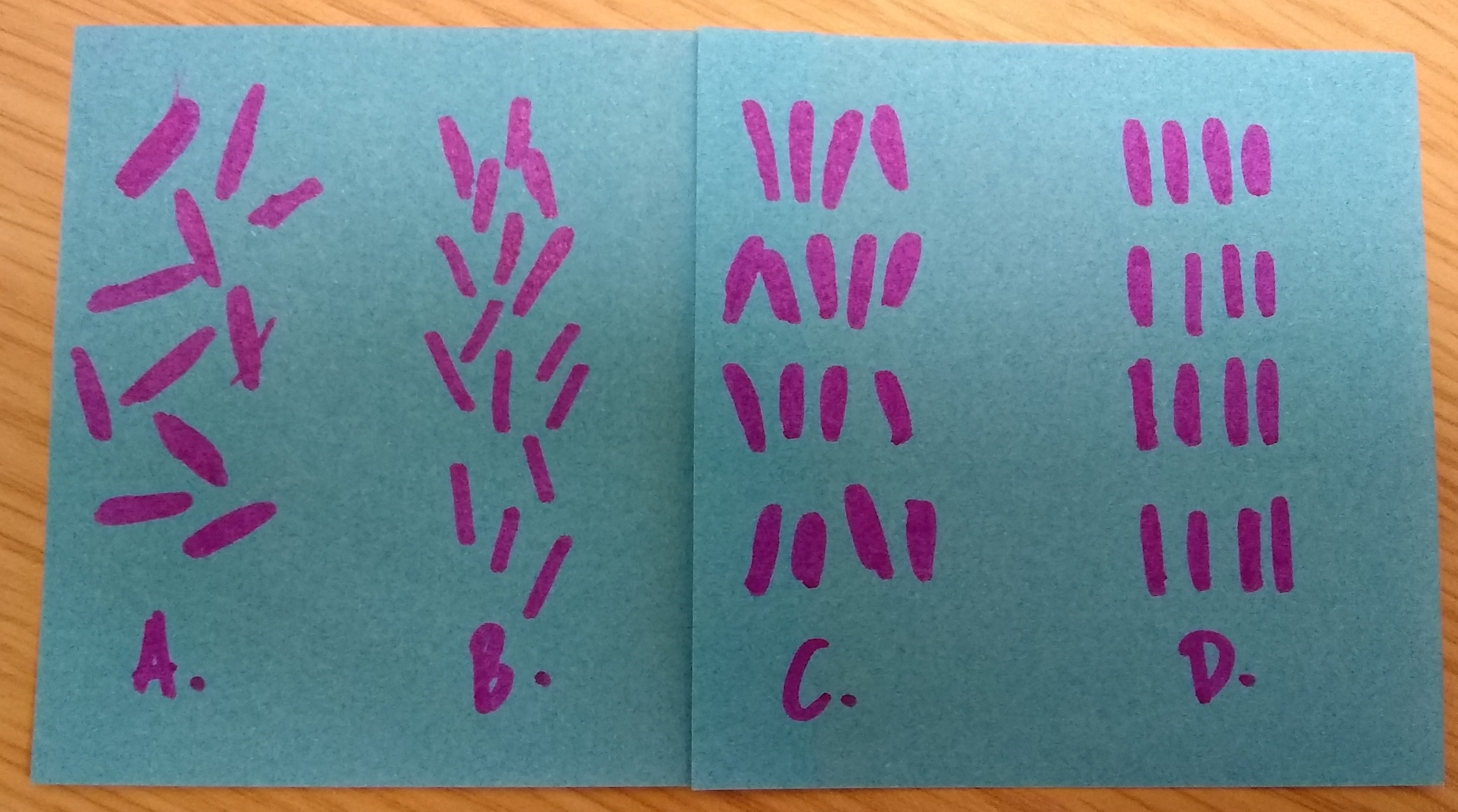
As stated, with changing orientation and order, the optical properties change, similar to the collagen from a previous post. Depending on how organized the molecules are, different light wavelengths are reflected by the mood rind “gem”. In other words: the warmer the mood ring gem gets, the less organized the liquid crystal molecules are, and that causes a shift in color.
So if you’re feeling unsure about your mood, mood rings don’t actually help, but I’ve found that they are quite a conversation starter. But now, instead of handing your ring to whoever exclaims “Oh cool! A mood ring! Can I try it on?“, you can also explain exactly how it (doesn’t) work.
I just bought myself a new one. ***
Cover image credit: Kaszynski lab
* Using any excuse to use the Greek alphabet for something other than fraternity names. I now walk to work through Fraternity Lane (not the actual name), so I’m constantly reminded of the letter φ.
** Bonus pic – origami flowers from those same pieces of paper:
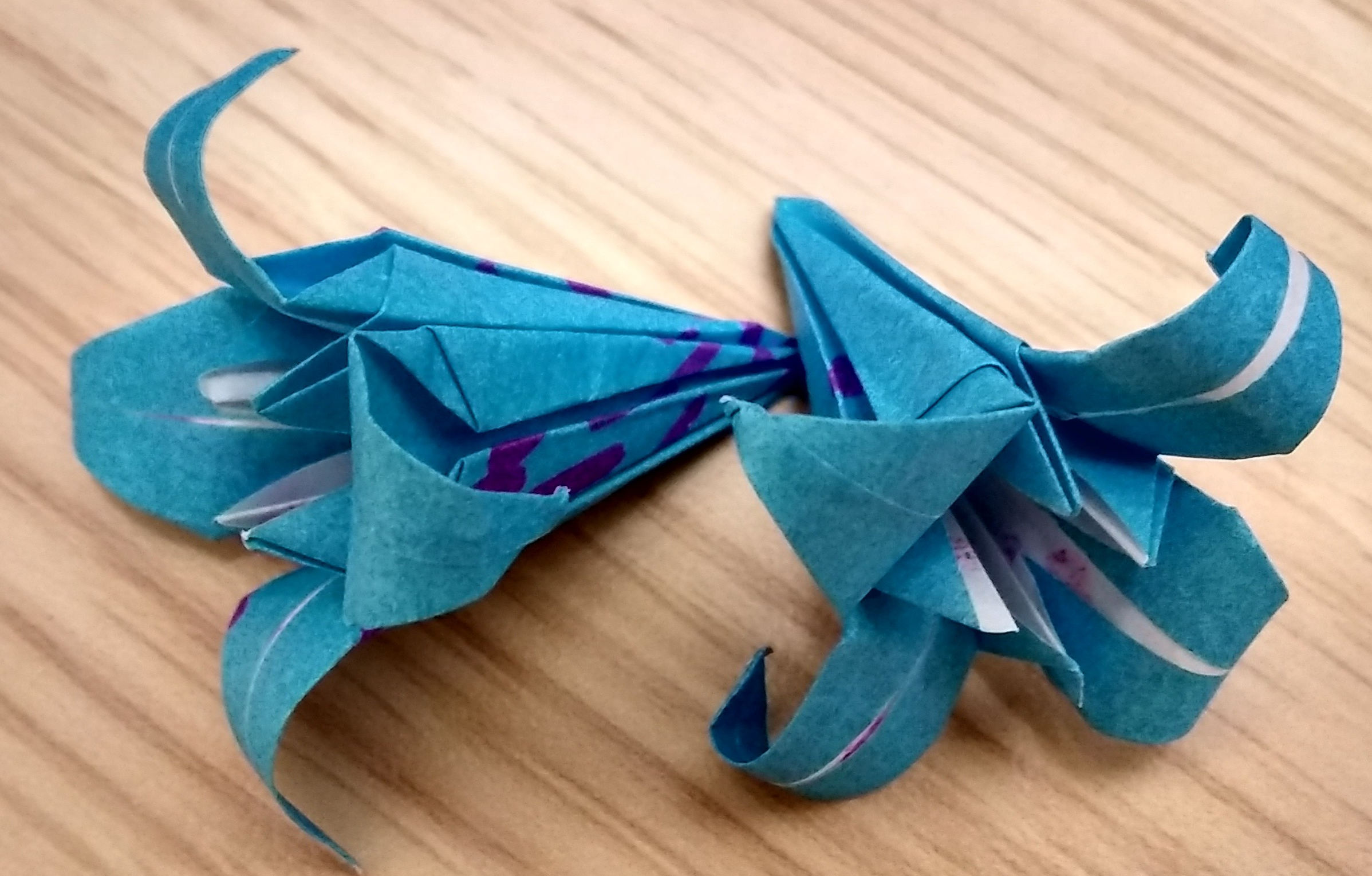
*** Bonus pic 2 – New ring!
